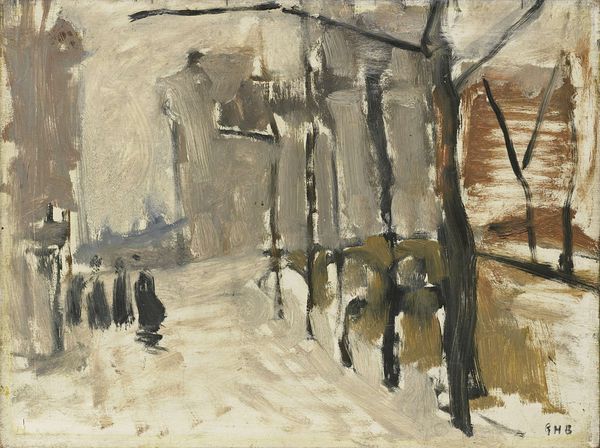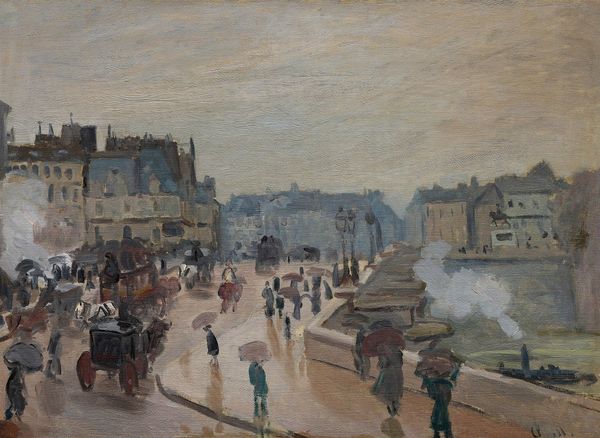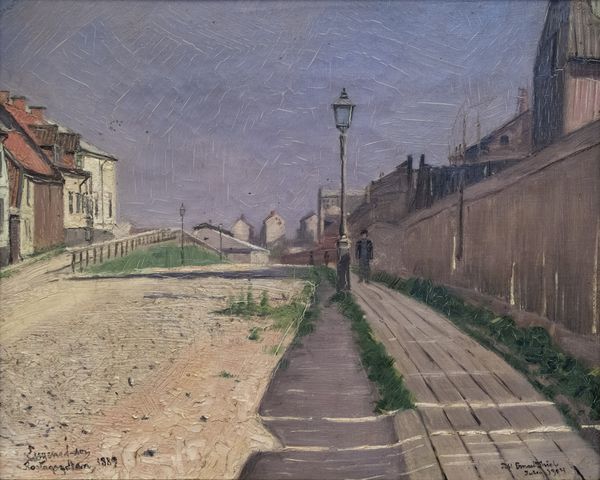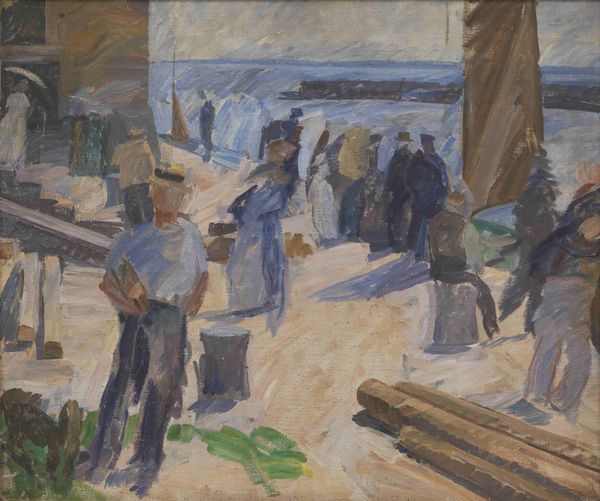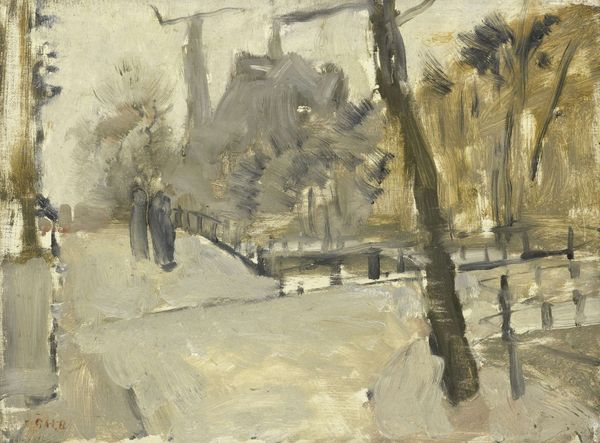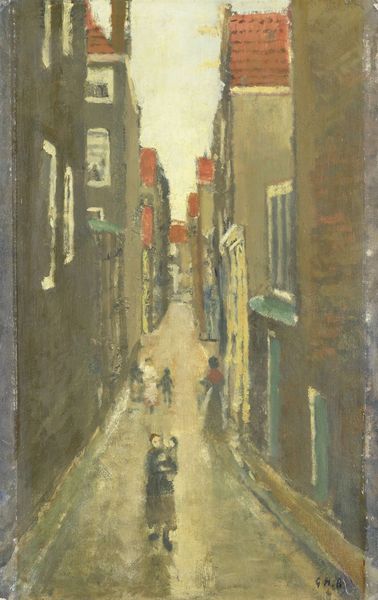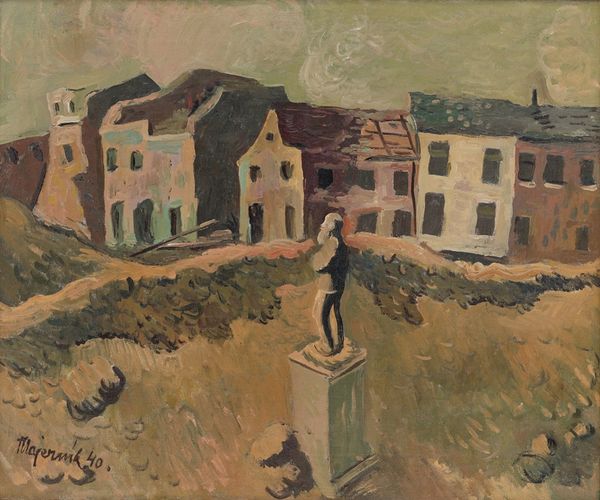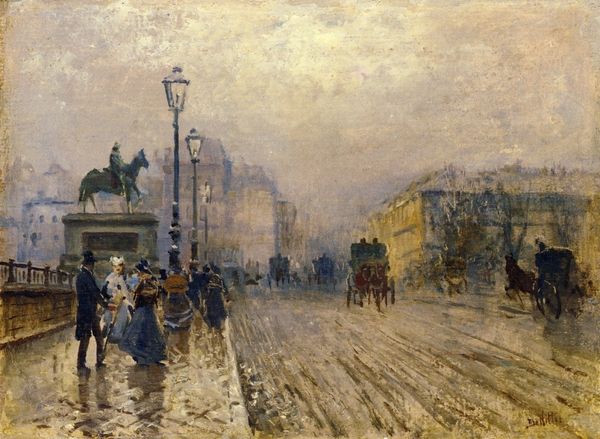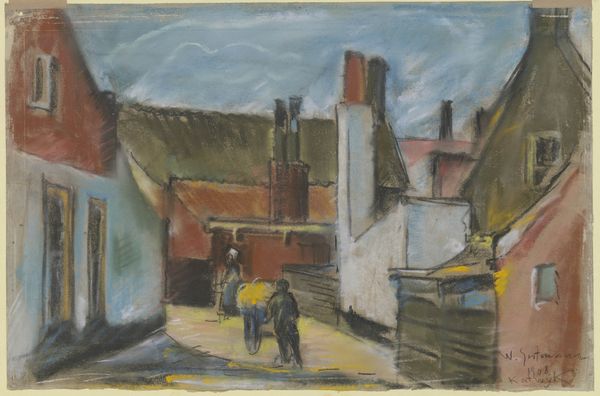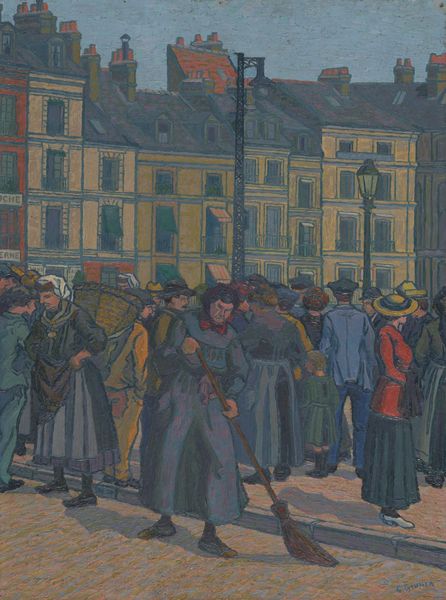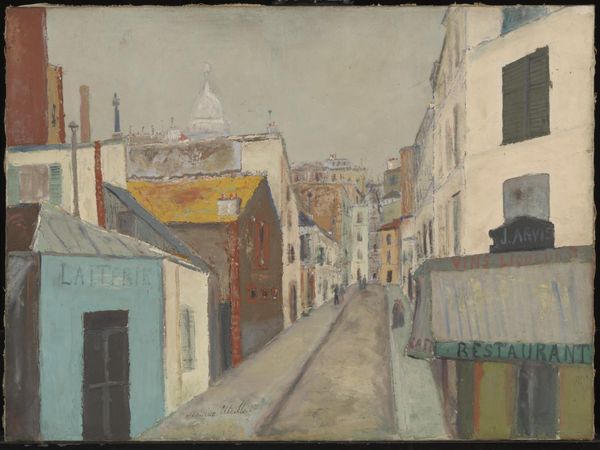
painting, oil-paint
#
painting
#
oil-paint
#
oil painting
#
cityscape
#
genre-painting
#
post-impressionism
#
watercolor
Dimensions: 55 cm (height) x 61.5 cm (width) (Netto)
Editor: We're looking at "La Morgue," painted by Robert Storm Petersen in 1906. It's an oil painting depicting a street scene in what appears to be a bustling, though somewhat grim, city environment. The muted colors give it a somber feel. What strikes you most about this work? Curator: Well, I'm immediately drawn to the setting itself, signified by the French flag. The title, "La Morgue," hints at this being a place of civic administration related to death – perhaps a city hospital or coroner's office. Petersen places this building within the public sphere, making a statement on how society engages with mortality. The figures walking past become unwitting participants in this somber theatre. Editor: That’s interesting. So you see the painting as more than just a street scene; it’s a commentary on society's relationship with death? Curator: Precisely. Consider how the figures are portrayed - their hurried gaits and obscured faces suggest a detachment from the building's implied purpose. How do you interpret the color choices? Are they merely aesthetic, or do they further reinforce a particular message? Editor: The drab greys and browns definitely contribute to the overall sense of unease. Only the figure in red seems to stand out. Perhaps they symbolize a kind of defiance against this grim atmosphere? Curator: That's a perceptive observation. One might argue that this isolated splash of color serves as a challenge to the bleak uniformity, raising questions about the artist's intent, the public reception and whether it's subversive or not. Also consider that a “morgue” is very different from a hospital… It only received the bodies after death. Is there a message there? Editor: I never would have considered so many socio-historical aspects from just one seemingly simple painting. It definitely gives me a lot to think about regarding the artist's intended message and the societal implications it raises. Curator: Indeed, art is never created in a vacuum; understanding its historical and cultural context enriches our experience and enables critical discourse.
Comments
No comments
Be the first to comment and join the conversation on the ultimate creative platform.
